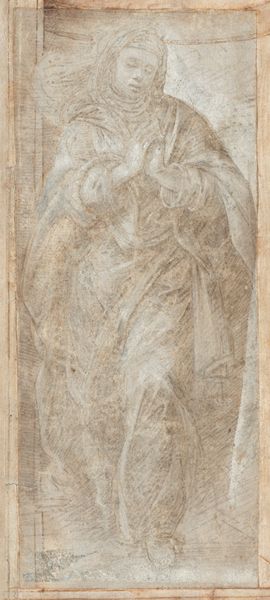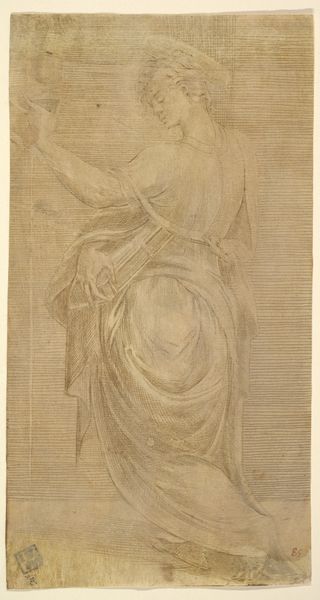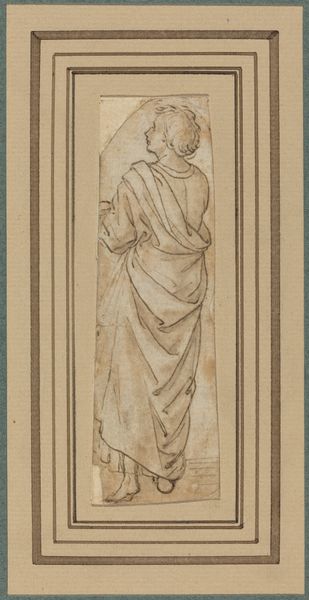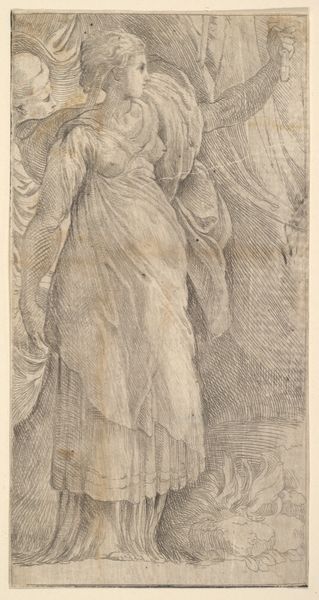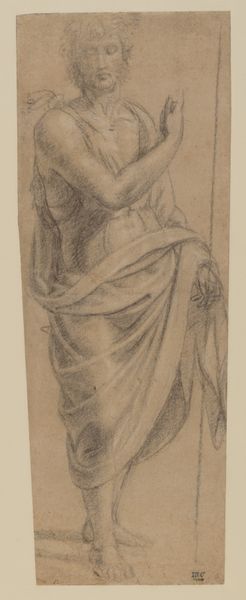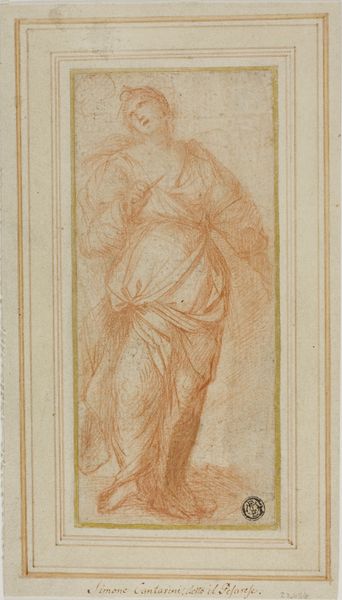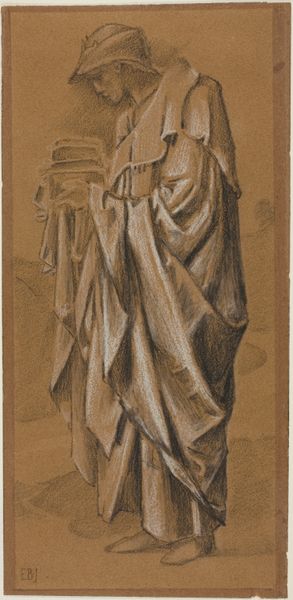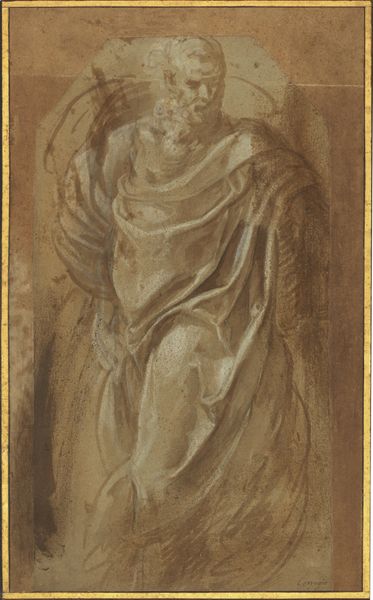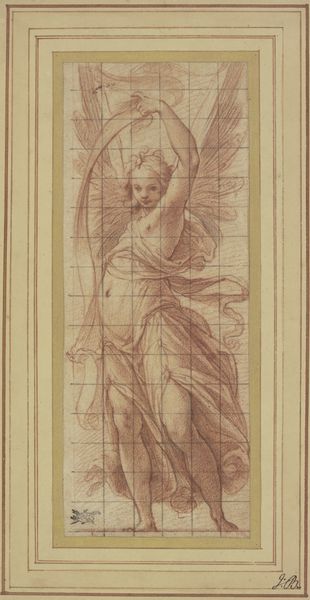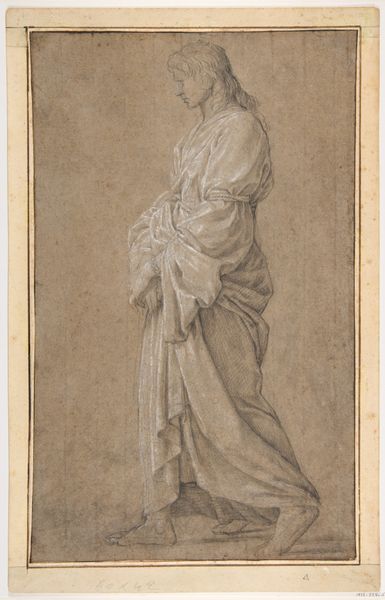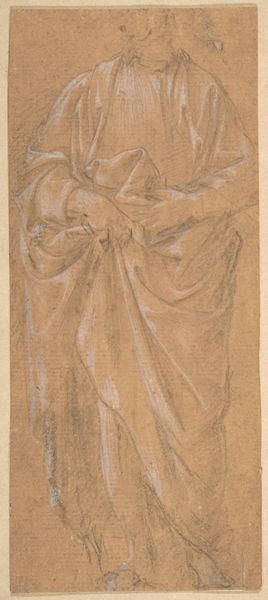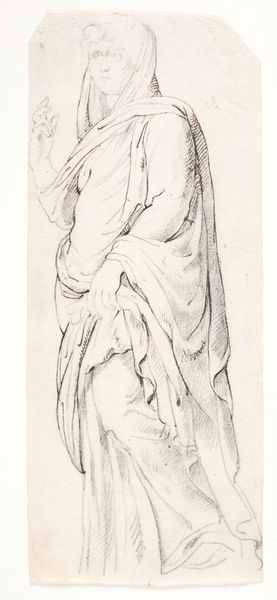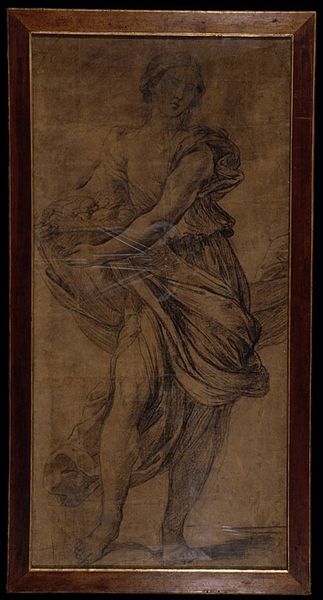
drawing, charcoal
#
drawing
#
charcoal drawing
#
figuration
#
11_renaissance
#
line
#
charcoal
#
history-painting
#
academic-art
#
italian-renaissance
Copyright: Public Domain: Artvee
Editor: This charcoal drawing is "Saint Paul Rending His Garments" by Raphael, created around 1515. The figure seems so full of contained energy. What visual elements contribute to the powerful sense of emotion captured here? Curator: Note the strategic use of line. Observe how Raphael employs dense, cross-hatched lines to build form and shadow, creating a powerful three-dimensionality. Consider the dynamic pose, with the figure's implied movement countered by the static verticality of the drapery. Doesn’t this interplay create a visual tension that echoes the emotional turmoil of the subject? Editor: Yes, I see that now. The strong contrast of light and dark, especially in the drapery, emphasizes that tension even further. It almost feels like the fabric is a cage. Curator: Precisely. Examine, too, the directionality of the strokes. Notice how they follow the contours of the body, reinforcing its volume and muscularity. This reinforces a potent image of inner conflict played out through masterful control of line and form. It’s almost as if the emotion is rendered through line itself. Editor: That's fascinating. I'd initially just focused on the drama of the pose. Analyzing the actual mark-making opens up a whole new layer of understanding. Curator: Indeed. By understanding how the elements of art contribute, it is easier to read art on a structural level. It's how it attains an everlasting quality.
Comments
No comments
Be the first to comment and join the conversation on the ultimate creative platform.
